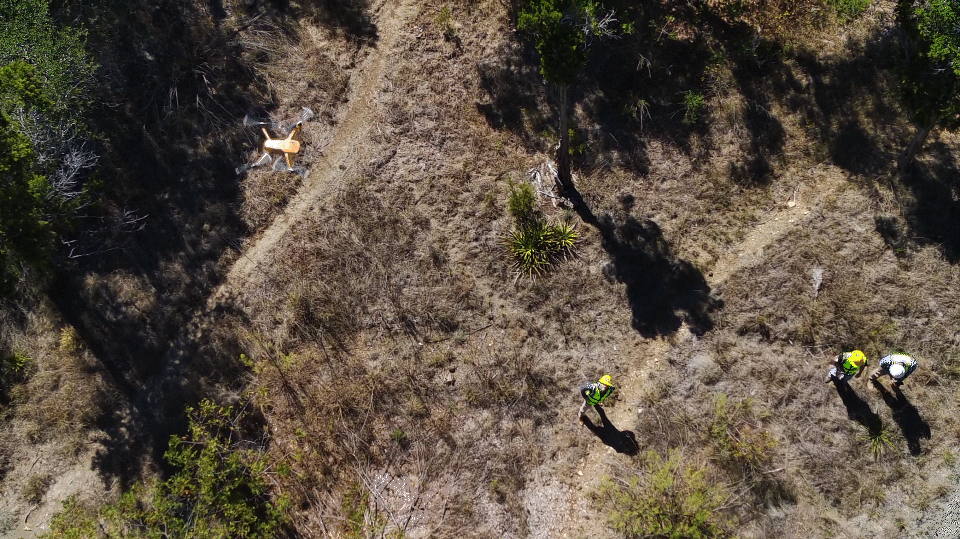2017 Solar Eclipse Route Directly over the U.S. – Texas to see Partial Eclipse

The earliest accounting of a solar eclipse may be in 585 BCE, when according to the Greek historian Herodotus, a solar eclipse stopped the war between the Lydians and the Medes, who saw the dark skies as a sign to make peace with each other.
Although early eclipse pioneers, including Chinese astronomer Liu Hsiang, Greek philosopher Plutarch, and Byzantine historian Leo Diaconus tried to describe and explain solar eclipses and their features, it was not until 1605 that astronomer Johannes Kepler gave a scientific description of a total solar eclipse.
More than a century later, Edmund Halley, who the famous Halley's comet is named after, predicted the timing and path of the total solar eclipse on May 3, 1715. His calculations were only 4 minutes and about 30 km (18 mi) off from the actual timing and path of the eclipse.
A thousand years ago, early Pueblo people, called Chacoans, captured their experiences of a total solar eclipse by carving it into a rock — a circle with looping streamers that resemble the sun's outer atmosphere, or corona.
Not only does this rock art, or petroglyph, depict a solar eclipse with a gigantic eruption of plasma called a coronal mass ejection (CME), its looping lines may have evoked a wondrous, inspirational experience, said solar astronomer J. McKim Malville, a University of Colorado Boulder professor emeritus, who is an expert in archaeoastronomy.
"The petroglyph looks more celebratory than frightening," Malville told Live Science. "If our interpretation is correct, they tried to depict the extraordinary sight of the corona, like nothing seen before — associated [it] with a deity that was even more mysterious and powerful than they imagined."

The rock art depicting a solar eclipse, possibly from A.D. 1097, looked "more celebratory than frightening," said a University of Colorado archaeoastronomer. Credit: J Mckim Malville/University of Colorado
OTHER NOTABLE SOLAR ECLIPES IN HISTORY
(Year -- Date -- Type -- Importance)
632 -- January 27 -- Annular -- Visible in Medina, Saudi Arabia, the eclipse coincided with the death of Prophet Mohammad's son Ibrahim. The Prophet reportedly dismissed rumors that this was a miracle, stating that the Sun and the Moon are signs of God and that they are not eclipsed for the birth or death of any man.
1133 -- August 2 -- Total -- King Henry's Eclipse: King Henry I died shortly after the eclipse, prompting the spread of the superstition that eclipses are bad omens for rulers.
1836 -- May 15 -- Annular -- English astronomer Francis Baily first discovered and described Baily's beads—a phenomenon that occurs in the seconds before and after totality in a total solar eclipse and annularity in an annular solar eclipse.
1851 -- July 28 -- Total -- The first photograph of the Sun's corona was taken by a Prussian photographer called Berkowski.
2009 -- July 21/22 -- Total -- Longest total solar eclipse of the 21st century. Totality lasted for 6 mins and 39 secs.
The reactions of plants and animals appear to be more of firsthand accounts rather than scientific data, but it’s interesting to learn of reported animal behavior during these events:
Reports of unusual animal reactions to solar eclipses date back centuries. One of the earliest stories comes from Italian monk Ristoro d'Arezzo, who described what happened during a total eclipse on June 3, 1239. As the sun disappeared and the sky turned dark, “all the animals and birds were terrified; and the wild beasts could easily be caught,” he wrote.
During an eclipse seen in Portugal on August 21, 1560, astronomer Christoph Clavius wrote that during totality, “stars appeared in the sky and (marvelous to behold) the birds fell down from the sky to the ground in terror of such horrid darkness.”
While it’s hard to confirm such colorful anecdotes from history, modern astronomers and eclipse chasers have also reported wild and domestic animals noticeably reacting to eclipses: Dairy cows return to the barn, crickets begin chirping, birds either go to roost or become more active, and whales breach in the seas.
Veteran eclipse-chaser Peter den Hartog traveled to Hungary in 1999 to experience totality, and he remembers seeing various species of birds and bats suddenly appear during totality.
Eclipse-chaser and author Dave Balch was in Kona, Hawaii, for the 1991 total eclipse and noticed excited activity among the birds along the pier during the partial phases before and after totality. “We could hardly hear each other talk! Then came totality – not a sound. It was deathly quiet. The difference between the noise levels before and during totality was stunning.”
And eclipse-chaser Tora Greve was on an expedition to Zambia in 2001 when she noticed that, just as the sun disappeared, frogs began making sounds and raptors stopped circling, possibly due to the change in thermals as the air cooled. Around the water hole where she was standing, she says, giraffes “started running about during the whole totality. When the sun came back, they stopped and began grazing the trees again.”
This year, the California Academy of Sciences is soliciting citizen scientists to record their observations of any animals they see using the academy’s iNaturalist app. The team there hopes to get more descriptions of more species covering a larger geographic area than during any previous eclipse.

And if you are feeling a bit dismayed because you will miss the total eclipse, take heart -- because in seven years (2024) another solar eclipse will come over the U.S. again only at a completely different angle and will be directly over Texas.
So get your glasses ready, find your spot, and save the date: April 8, 2024 !


















